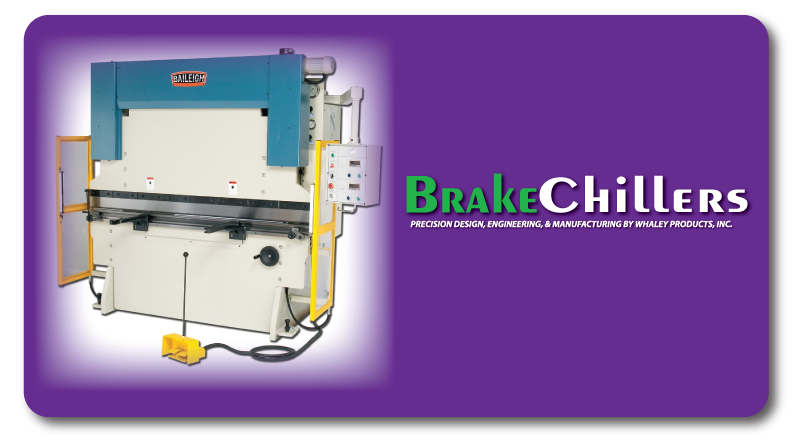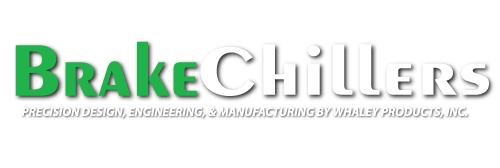Industrial press brakes are powered with hydraulic fluid. The pressure of the hydraulic fluid is what allows brake presses to exert extreme amounts of force. The hydraulic fluid is heated due to system inefficiencies. This is expressed as:
PL total = PL pump + PL valves + PL plumbing + PL actuators
where PL = power lost
Cooling capacity is usually required to be between 25% and 40% of the total input power. If hydraulic fluid temperatures reach over 180⁰F the seal compounds will become damaged, and the fluid will degrade more rapidly. To achieve stable fluid temperature, a hydraulic system’s capacity to dissipate heat must exceed its heat load. For example, a system with continuous input power of 100 kW and an efficiency of 80% needs to be capable of dissipating a heat load of at least 20 kW. Assuming this system has a designed cooling capacity of 25 kW, anything that increases heat load above 25 kW or reduces the cooling system’s capacity below 25 kW will cause the system to overheat. If the system is overheating, it can be fixed in two ways either by increasing heat dissipation or by decreasing the heat load. This is done by using a chiller or cooling tower to circulate cooled fluid.
 If there is a sudden drop in pressure, it may be caused by failure of a hydraulic component. This may be a broken cylinder piston seal, or simply an incorrect setting of a relief valve. This is why it is important to run regular system maintenance checks. This prevents simple problems that can be fixed with a replacement seal from building up to massive issues. This is a basic list of maintenance to perform every 2,000 hours of operation. The fluid should be analyzed at this time as well. This determines whether the fluid should be replaced or simply filtered and conditioned.
If there is a sudden drop in pressure, it may be caused by failure of a hydraulic component. This may be a broken cylinder piston seal, or simply an incorrect setting of a relief valve. This is why it is important to run regular system maintenance checks. This prevents simple problems that can be fixed with a replacement seal from building up to massive issues. This is a basic list of maintenance to perform every 2,000 hours of operation. The fluid should be analyzed at this time as well. This determines whether the fluid should be replaced or simply filtered and conditioned.
- Clean the tank and the suction filters thoroughly before filling. There are usually two filters to clean: the screener filter located on the pump inlet and a high-pressure filter at the pump outlet.
- Clean or replace filters. When changing and mounting the filters, pay attention to purity. Filters that have been exposed to a dirty environment should not be used.
- Check the air filter on the fluid tank cover. This filter usually is cleaned with compressed air, but depending on the shop environment, may need a more rigorous cleaning.
- Always use oil with similar characteristics of the oil types recommended by the press brake manufacturer. This does not apply to press brakes that have proportional valves instead of servo valves.
- Check the pump and pressure relief valves for maximum pressure. The number of valves to inspect depends on the size of the press brake and the options it has. Under no circumstance should the maximum pressure exceed the manufacturer’s specification.
